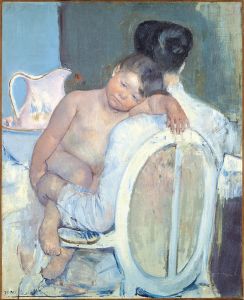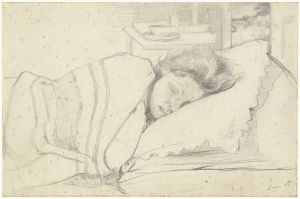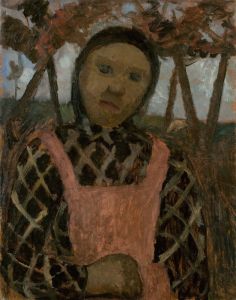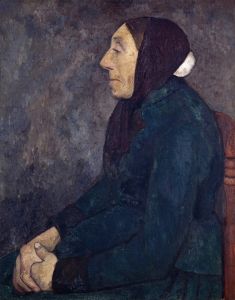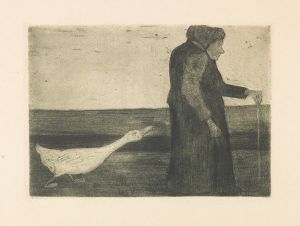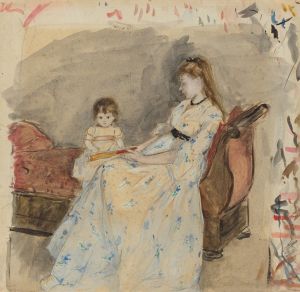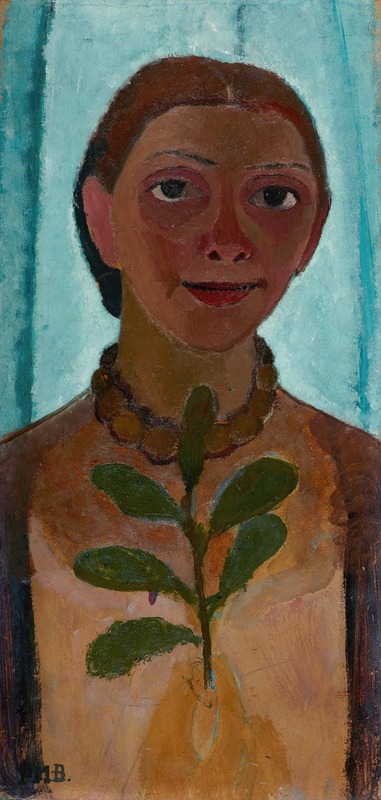
Self-portrait with a camellia branch
A hand-painted replica of Paula Modersohn-Becker’s masterpiece Self-portrait with a camellia branch, meticulously crafted by professional artists to capture the true essence of the original. Each piece is created with museum-quality canvas and rare mineral pigments, carefully painted by experienced artists with delicate brushstrokes and rich, layered colors to perfectly recreate the texture of the original artwork. Unlike machine-printed reproductions, this hand-painted version brings the painting to life, infused with the artist’s emotions and skill in every stroke. Whether for personal collection or home decoration, it instantly elevates the artistic atmosphere of any space.
"Self-portrait with a Camellia Branch" is a notable work by the German painter Paula Modersohn-Becker, who is recognized as one of the most important early Expressionists and a pioneer in the field of modern art. This painting is part of her extensive oeuvre of self-portraits, which she used as a means of exploring her identity and artistic vision.
Paula Modersohn-Becker was born on February 8, 1876, in Dresden, Germany. She became associated with the Worpswede artists' colony, where she developed her distinctive style that combined elements of realism and expressionism. Her work often focused on themes of femininity, motherhood, and the natural world, and she is known for her bold use of color and form.
"Self-portrait with a Camellia Branch" is believed to have been painted around 1907, a year before Modersohn-Becker's untimely death at the age of 31. The painting is a striking example of her self-portraiture, which was groundbreaking for its time due to its introspective nature and the way it challenged traditional representations of women in art.
In this self-portrait, Modersohn-Becker presents herself with a camellia branch, a symbol that may carry various interpretations, including beauty, purity, and transience. The camellia, with its delicate flowers, contrasts with the artist's strong, direct gaze, which engages the viewer and invites contemplation of her inner world. The use of the camellia branch may also reflect Modersohn-Becker's interest in nature and her desire to connect with the natural environment.
The composition of the painting is notable for its simplicity and focus. Modersohn-Becker's face is rendered with a sense of immediacy and presence, characterized by her use of broad, expressive brushstrokes and a limited color palette. The background is often kept minimal, drawing attention to the artist's features and the symbolic camellia branch.
Modersohn-Becker's self-portraits, including this one, are significant for their exploration of the female experience and the artist's personal identity. At a time when female artists were often marginalized, her work asserted a powerful sense of self and challenged societal norms. Her self-portraits are considered some of the earliest examples of a woman artist depicting herself in a manner that emphasizes her autonomy and introspection.
"Self-portrait with a Camellia Branch" is housed in the Paula Modersohn-Becker Museum in Bremen, Germany, which is dedicated to her life and work. The museum holds a substantial collection of her paintings, drawings, and personal artifacts, providing insight into her artistic journey and legacy.
Paula Modersohn-Becker's contributions to modern art were not fully recognized during her lifetime, but her work has since gained significant acclaim. She is now celebrated as a trailblazer who paved the way for future generations of women artists. Her self-portraits, including "Self-portrait with a Camellia Branch," continue to be studied and admired for their emotional depth and innovative approach to portraiture.





